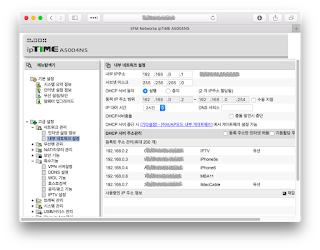The AI Development Model and Its Industrial Impact
AI Development Model and Related Industries
1. Background
With the advent of generative AI, industries and professionals are leveraging this technology to create high-value services and products. According to Goldman Sachs (April 2024), the development of the AI industry is expected to proceed in four stages. The recent spotlight on semiconductor companies like NVIDIA is due to their crucial role in the early stages of AI development.
AI Development Model
| Stage | Impact of AI on Industry by Stage |
|---|---|
| Stage 1: AI Semiconductor | - Strengthening the dominance of hardware manufacturers producing AI-based computer chips - A significant surge is expected due to the rising demand for generative AI technologies |
| Stage 2: AI Infrastructure | - Industry focused on cloud services and infrastructure supporting AI technologies - Promotes the growth of AI software and AI service companies |
| Stage 3: AI-based Services | - Companies integrating AI into their product or service processes are likely to grow - Growth of IT services industries enhancing efficiency through autonomous vehicle software, generative AI software services, etc. |
| Stage 4: AI-driven Productivity Enhancement | - Exploring ways to widely apply AI across industries to enhance productivity - Focused on industries traditionally requiring high labor costs, software, IT, law, education, and other service sectors |
According to this model, once AI technology reaches the fourth stage, it will become essential for humanities and social sciences researchers, university professors, R&D specialists, industrial technicians, legal experts, and technical consultants to understand and apply the concept of generative AI.
Since 2022, interest in generative AI has surged, mainly due to the exponential increase in digital data for AI training, which allows machines, rather than humans, to perform smart reasoning and draw conclusions.
OpenAI's ChatGPT and GPT models provide the capability to create personalized AI assistants, significantly impacting various AI-related services.
Historically, industries that required high labor costs have experienced significant changes in employment structures through technological innovation.
Similarly, it is worth noting which industries AI will enhance productivity in the future.
Changes in Industry and Employment through Historical Innovation
| Period | Past Industry | Innovative Changes |
|---|---|---|
| 19th Century | Ice Harvesting | Ice harvesting tools and insulated ice storage |
| Early 20th Century | Horse-drawn Carriage Industry | Ford's moving assembly line |
| Post-1980s | Manual Office Work, Typing, and Filing | Personal computers and office software |
| Late 20th Century to Early 21st Century | Film Photography and Development | Digital cameras and photo editing software |
19th Century Ice Export Industry in the U.S.
2. AI Possibilities and Concerns
On May 13, 2024, ChatGPT-4 demonstrated its versatility as an AI learning tutor, translator, visual aid, meeting facilitator, and even a daily companion.
However, IT media have raised concerns related to AI scenarios mimicking human companions, as depicted in the movie *Her*.
The AI envisioned in this movie is expected to emerge in 2025, and now that point is less than six months away.
Such technological innovations not only pose questions about the impact of AI on industries but also about the necessity of human roles in professions like education and driving. Goldman Sachs, in its March 2024 report "Potential Impact of AI on Economic Growth," highlighted both positive and negative aspects of AI's future.
SF Movie *Her* (2013)

3. Positive Impact: Expanding Global Market
AI advancements have had a positive impact on the global market. As of today, 60% of jobs were created through technological innovations since 1940, and IT developments have led to new professions such as web designers, software developers, and digital marketing specialists. These new professions have also promoted related employment in sectors like healthcare and food services. Generative AI is expected to continue this trend, with Goldman Sachs (April 2024) estimating that it has the potential to increase global GDP by up to 7%.
4. Negative Impact: Employment V Valley
While AI is expected to drive economic growth, it also poses a significant risk to employment markets, potentially causing considerable disruption. Although GDP growth is anticipated over the next decade, in the short term, productivity improvements due to AI may lead to reduced labor demand. This is likely to follow a similar pattern to the impact that personal computers in the 1980s and IT automation in the 2000s had on employment.
Degree of Employment and Unemployment Change Due to Technological Innovation
- Source: Goldman Sachs
- Raw Data: Acemoglu and Restropo (2019). “Automation and New Tasks: How Technology Displaces and Reinstates Labor”. Journal of Economic Perspectives 33(2).
In the long term, generative AI is expected to promote employment growth, but the labor market may experience a temporary slump, known as the 'employment V-shaped valley.'
This employment downturn is expected to reach a turning point in the next 10 years, similar to the historical pattern where advancements in hardware and software since 1987 have enabled more affordable automation, replacing labor demand.
Over the past 50 years, the labor market in IT-based industries has faced job instability and unemployment due to technological innovation.
5. Prospects of AI and Reemployment
Generative AI and AI technologies in the physical world hold the potential to significantly enhance productivity while providing higher-quality services at lower costs.
These technological advancements follow patterns similar to those brought about by past innovations such as automobiles, electric motors, personal computers (PCs), and information technology (IT).
As AI technologies spread across industries, it is important to assess how your job may be affected by AI.
In particular, if your profession is exposed to AI at a level exceeding 25%, it is essential to prepare for professional challenges or explore ways to enhance productivity by utilizing AI.
Moreover, it is worth noting that those with higher education are more likely to be affected by technological automation brought about by generative AI.
For further details, refer to the McKinsey & Company (2023) report, "The Economic Potential of Generative AI."
Professions Exposed to AI Automation (U.S. Case, Average 25%)
6. Case Study: Multimodal Data Recognition
With the rapid development of AI and generative AI, we are now witnessing new possibilities presented by cutting-edge technologies.
The recent direction of AI development involves not only text-based analysis but also utilizing visual data from cameras, allowing trained models to bring about revolutionary changes like autonomous driving.
In particular, the emergence of ChatGPT-4 goes beyond text-based analysis by incorporating voice and visual data input and output to provide individualized educational services, much like a personal robot tutor.
At the current level of technology, when a problem is displayed on the screen, and personal tutoring is requested, AI can present step-by-step questions, recognizing and analyzing what the student adds with their pen in real-time.
ChatGPT4o Demonstrating a Personalized Tutoring Session

7. Conclusion
As AI technology continues to evolve and integrate into various industries, its transformative impact on productivity, employment, and daily life will present both challenges and opportunities. It is crucial for individuals and businesses to embrace these technologies, as they will shape the future.






Comments
Post a Comment